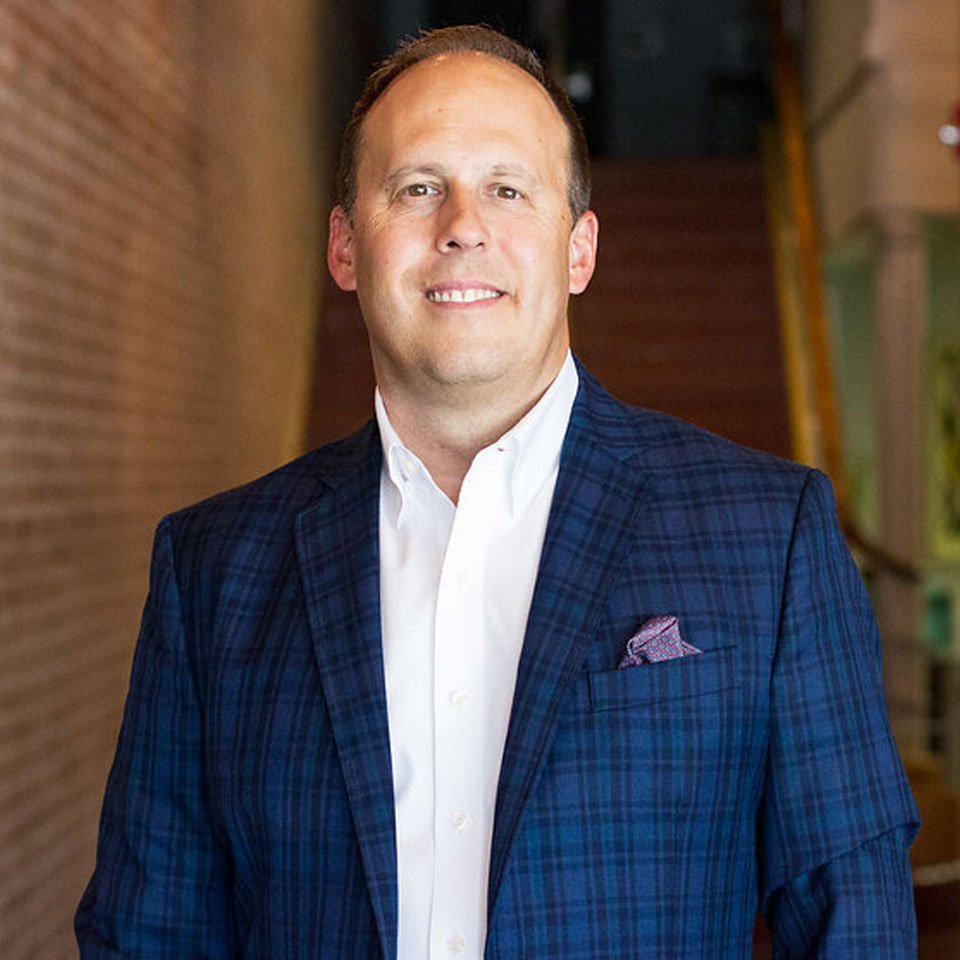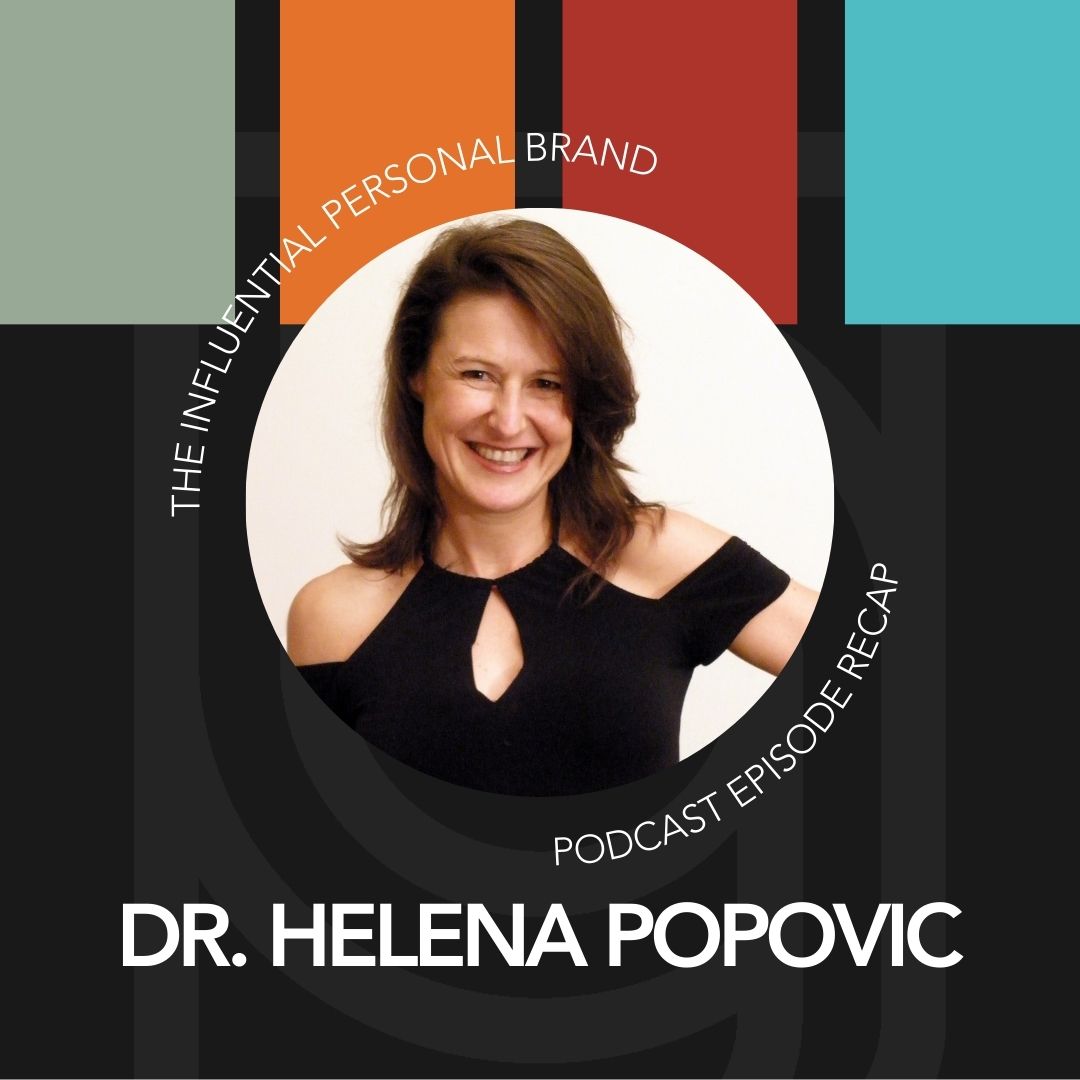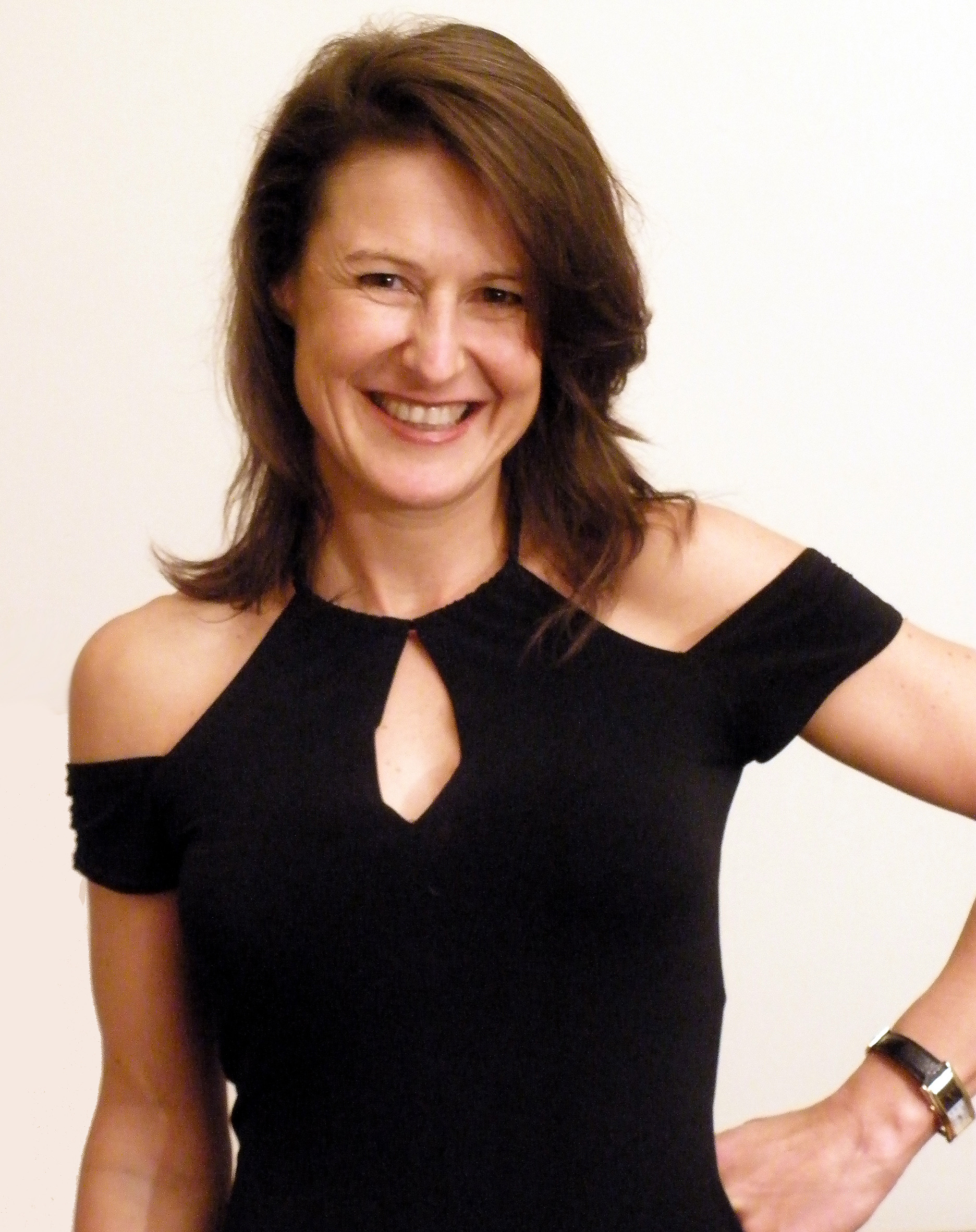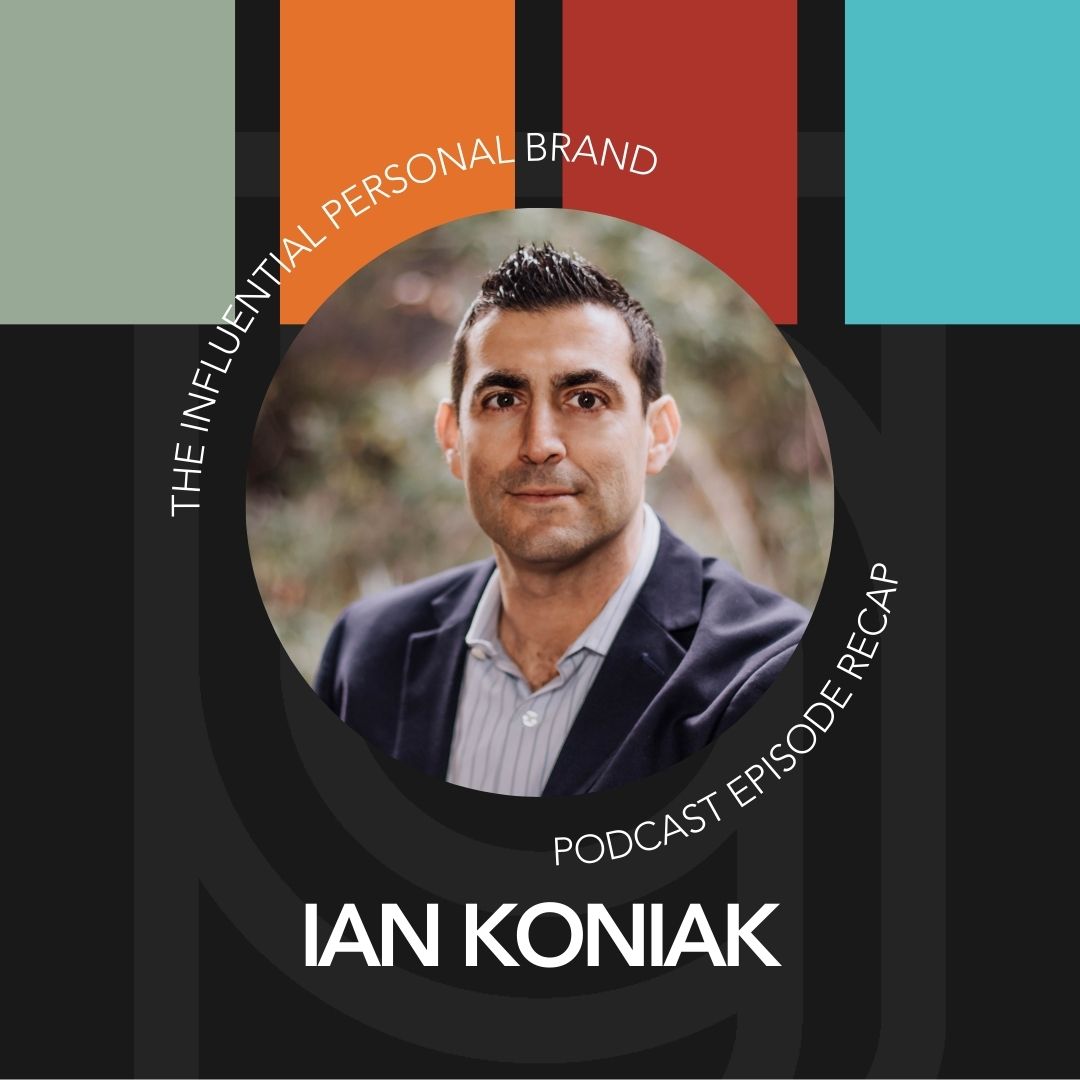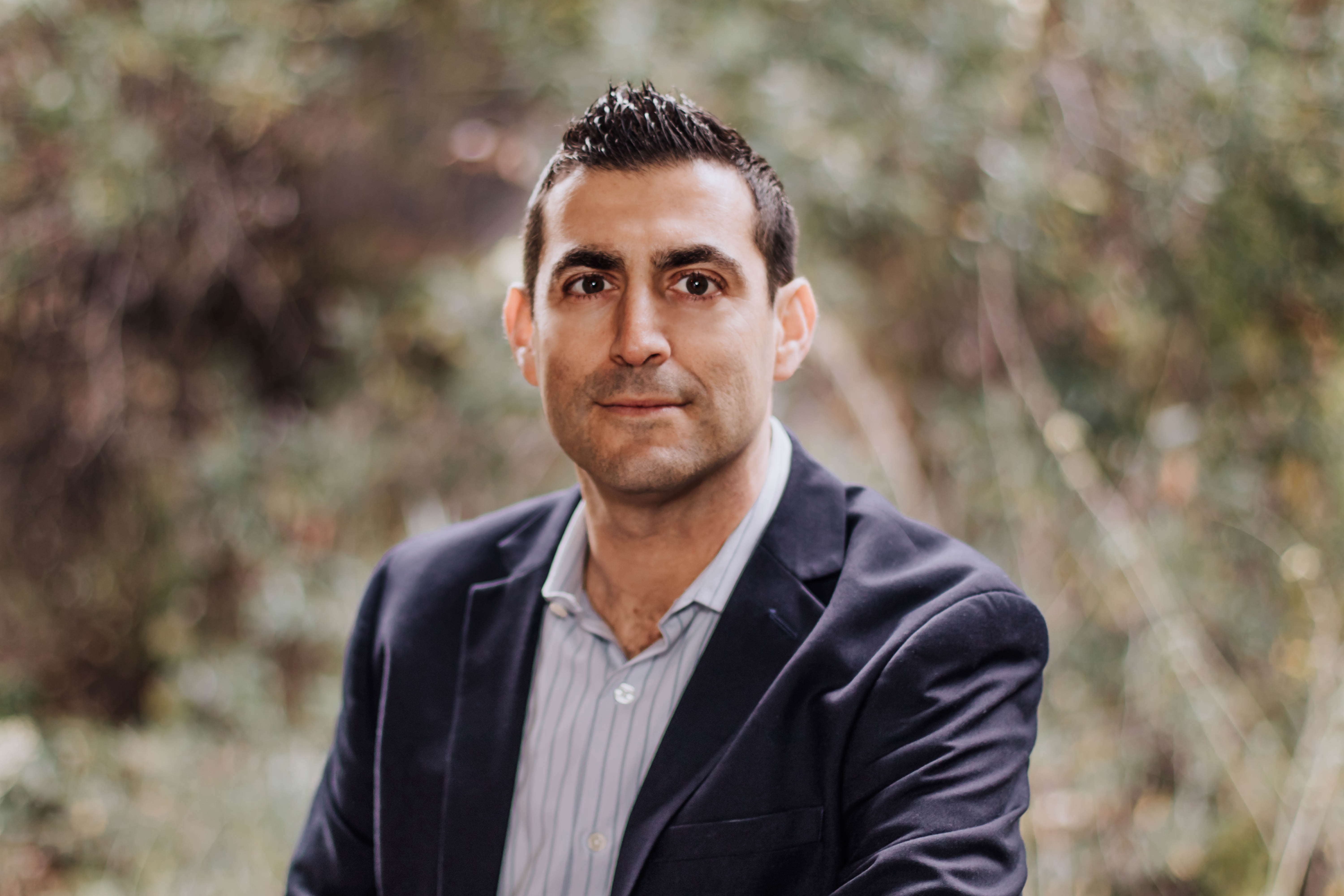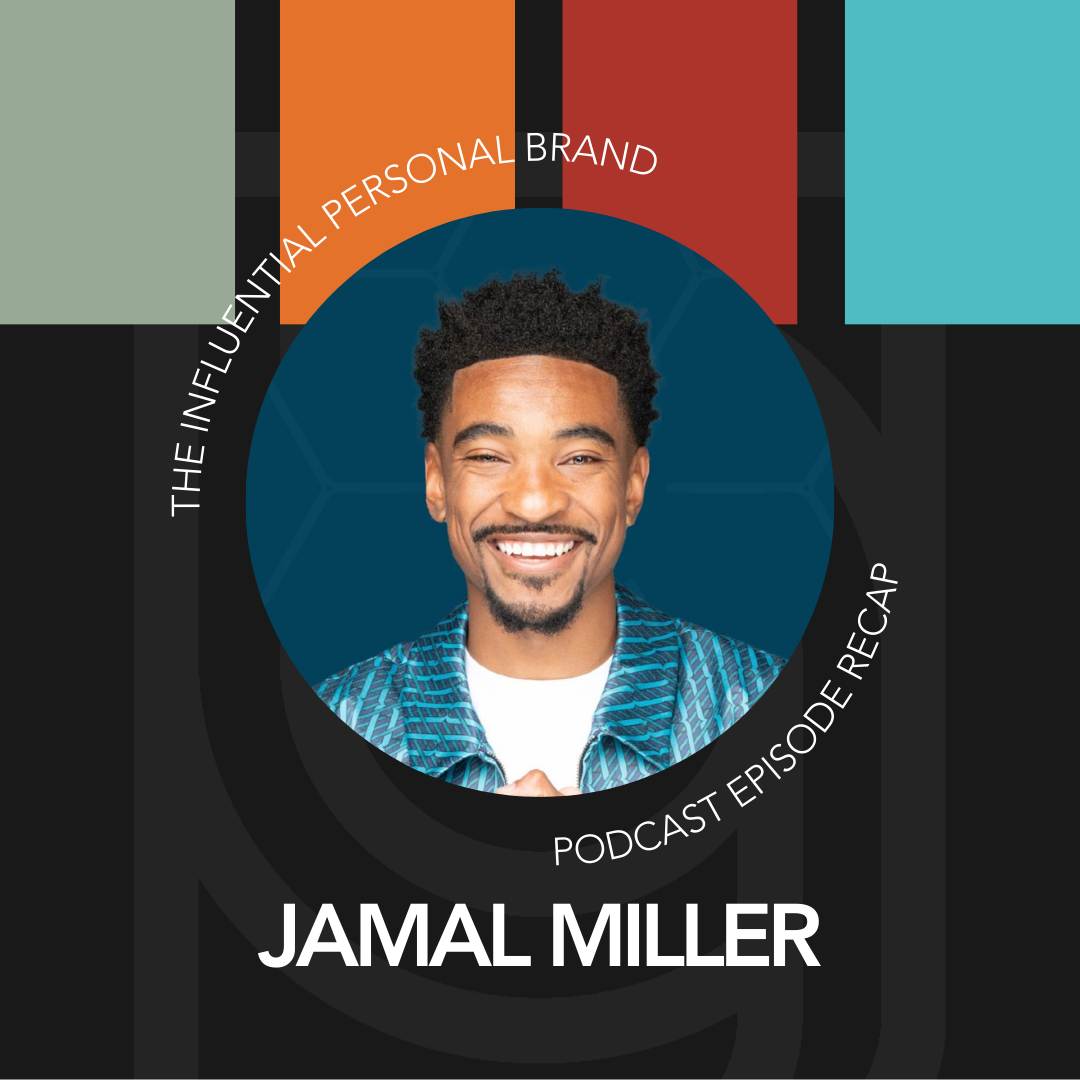RV (00:02):
One of my favorite sayings that we’ve been talking about recently with our community is that, you know, in golf, you drive for show and you put for dough, and we’ve been talking about how email or social media is for show, and email lists are for dough, and that’s really where you make money inside of that same vein of that concept, a lot of the personal, the biggest personal brands in the world that you meet and you follow and you hear of often don’t have that big of businesses on the back end. And that’s usually because they’re really built around one person and one person can only do so much, they can only be available so many days in so many ways and so many places. And so there’s a very different conversation that happens around building a personal brand versus turning a personal brand into something that has enterprise value, basically a, a business or a revenue stream or set of revenue streams that you can sell.
RV (00:59):
And that’s what we’re gonna talk about today. We’re gonna talk about how to turn your personal brand into a business that you could actually sell one day, or just that has enterprise value, that it would live beyond you if you died, or that could be transferred to your kids or your employees you know, after you die. And to talk about that, we’re gonna bring one of the people who is truly the best in this space of anyone in the industry, of any, anyone that I’ve ever met in the personal development industry. So his name is Jeremy Kubek. I’ve known about Jeremy for years probably over a decade. We’re gonna, you’re gonna hear some of his background. But this person, like this man has had a lot to do with being a part of John Maxwell and helping build the Maxwell companies and some of the things they’ve done.
RV (01:47):
If you’ve ever heard of Chick-fil-A leader cast Jeremy was a huge part of that. These are, you know, huge catalyst catalyst conferences. This is a man who was very involved in a significant way behind the scenes. Now today he’s a Wall Street Journal bestselling author. He’s a speaker. He talks, he’s a thought leader and he is a serial entrepreneur, and he, you know, generally works in this space of kind of corporate leadership. And we’ll talk about some of his model today. But I really brought him on the show to talk about his newest book, the Communication Code. So, we’ll, we’ll touch on that a little bit, and also to really talk about how do you turn your personal brand into something with enterprise value. So Jeremy, welcome to the show,
JK (02:32):
Or good to be with you. Thank you, man. I’m, I appreciate all that you do. You have such a good reputation and just fun to be here.
RV (02:38):
Well, thank you, man. I, I, so you too. And, and I think specifically when I, the brands, the, the, the, the brands, the movements, the conferences, the companies that you’ve been a part of are ones where it’s like, you know, they have very, very strong reputation. So knowing that the context of this conversation is kind of around building a scalable enterprise can you just give us sort of like a brief history? I know you’ve done so many things, but like some of the high points of the big personal development brands that you’ve been a part of, of building.
JK (03:15):
Yeah. And so much of what I’ve done in the past, you know, which was, and I’ll tell you why I shifted to where I’m going and where I’m now, but we were a part of helping John Maxwell. We bought John Maxwell’s assets years ago inside Enjoy Maximum Impact. We bought inside of that was Catalyst. We stripped out and built the Catalyst conferences. We created Leadercast as a brand and started that as well. And then we partnered with people like Henry Cloud, pat Lencioni, Craig Rochelle, Andy Stanley you know, these thought leaders that were just doing amazing things and, and still are. But at the time that was, you know, that was back in the day, right? It’s like, yeah, I’m the good old days. And it was at the height of the conference world, and I, I saw the writing on the wall.
RV (04:08):
What year is this? What year is this? This is
JK (04:10):
2007 to 2015 that timeframe. And up to, I sold it all in 2011 and then 17 in parcels. And these
RV (04:23):
Were all on my vision board. FYI like Leadercast funny. I’m speaking at Leadercast this year. That’s, that’s still going. I’m actually speaking there in April. But like Leadercast and Catalyst, like these, these were events that were on my vision board as like an, as a up and coming speaker. So that’s, that’s awesome.
JK (04:39):
Yeah. And so, and you know, catalyst was so fun because Brad Lanik and I I was CEO he was exec director. He, he did such a good job, but we built an unbelievable experiential event. I don’t think there’s anything like Catalyst today. And, but the problem was, is that I, I was looking at it going, okay, this is a 20th century model. We are one pandemic away from going outta business. We’re one terrorist attack. And I was trying to figure out how to scale, how do we scale content? And most all the content was speakers having books, and what do you do from here? Right? And that led me on this journey of like, man, I wanna, I wanna actually go and look at how do you actually scale. So I moved to London, sold all of that, and people thought it was crazy. But we started over because I was trying to look at the 21st century, how do adults learn? How do you actually work inside B2B and actually make it stick and last? And that’s what we’ve done since that time.
RV (05:46):
Uhhuh . Yeah. That’s so interesting. I mean, the so can, can we just one, one, this is a rabbit trail. Yeah, go for it. I’ve always wondered about the Chick-fil-A leader cast thing, and how did that happen? How did you, because, because what, from what I understand, Chick-fil-A was basically a title sponsor.
JK (06:06):
Yeah, that’s right.
RV (06:07):
Is that like, and how do you, how do you get a title sponsor? How did you even think to go to them? Like how did that come about? And like, if somebody has a big event, like what, what do they do to land sponsors like that?
JK (06:18):
Okay. It was, it was unbelievable how this happened. This is an epic story. So I my, I have a phrase like, who says we can, right? And so I had built a relationship through Chick-fil-A through David ERs, and he was over marketing and a good friend of mine, JT Robinson at Chick-fil-A and they connected me to Dan Cathy, and then we started becoming friends. And, you know, they loved the Catalyst conference. We were in Atlanta, so they already knew all about us because of that, right? So we already had these great relationships. But I invited, we were, we had Tony Blair, we as the speaker with Leadercast, and I invited David to come with me, Sawers and Dan, Kathy and I had Henry Cloud do the interview. So we’re in Tony Blair’s office, which was the home of John and Abigail Adams that shows you how old it was.
JK (07:08):
Wow. And we did the interview there, and it was, I have funny side stories with Henry Cloud and, and Tony Blair’s socks. But anyway funny things that happened. And then Dan, Kathy was with us and he saw the gravitas of it. He saw it. And on the way home David Sawers we took another trip to Paris and let, let’s get a couple of days and just, you know, process a partnership. What would a partnership look like? We’re on the way to the airport in a taxi, and David throws out a number, he’s in the front seat. I’m right behind him. He goes, Hey, how about X? And I go, how about Y? And then he goes, well, how about Z? And we shook hands at the, at the airport as we’re both flying back, and that’s how it took place. And we created the title sponsorship with a vision of the Chick-fil-A leader cast. Unfortunately, I had sold down by the time we were finished, I had sold down. And the other owners, they made different moves and didn’t value that partnership. I think it was fear of political positions of Chick-fil-A and things like that, that I think they overthought it. And now Chick-fil-A’s at 22 billion and Leader cast missed out on it. But I had already sold at that point in time.
RV (08:30):
Yeah, that is, that’s just wild. And so, like, , so when you, when you put on a conference, ’cause that’s, that’s, you know, just to stick on the rabbit trail here for a second, you did that for a lot of years. Like, you got a lot of people to show up, and that’s not easy to do. And you did it under a couple different big brands here. Yeah. Like that model though, even for like small coaches, we, we still talk to ’em a a lot of times today of just like, it’s good to just sell a ticket to and have people come to an event. And it can be three people, it can be five people, it can be 50 people, and it, and it grows. So like, can you just share a little bit about like how did you start when you were putting those on, and like, how much were you selling the tickets for and how were you selling the tickets? And just a little bit about that. And then I do want to get into like the B2B and like where, why you’re, you know, doing what you’re doing today.
JK (09:21):
Well, so let’s take Leader Cap. I meant Catalyst is pretty simple. You have an arena, it has a cost. You build an amazing experience and amazing brand. And we actually, we, we did Catalyst. We said you had to be over 40 to come under under 40 to come. And we, we carted people at the door. So we created Scarcity with the idea, and then we produced the ticket price, and we said it’s for volunteers inside churches. So it’s not just church leaders, it’s the entire volunteers of a church. So they would use it as their annual retreat. And so Catalyst became kind of a mecca, probably the wrong word to use, but from that, the, a mecca of that, that that world. And then for Leadercast, it was different. I had already done the Maximum Impact simulcast, we own that. And then I sold that with John Maxwell and I sold it back to him.
JK (10:11):
So I built the leader cast brand. And we just took a brand that we had, we had done before, but we hadn’t used it. And I basically thought of Jake at State Farm. This is State Farm Insurance around the, the United States, like small town insurance agents, small town chambers, small town bank presidents. They want to gather and have events, but they can’t afford to bring Tony Blair in. They can’t afford to bring John Maxwell in or pick a thought leader. So really, there was a simulcast for small towns. And then you get them to, to host it, and they pay a host fee. And I can’t remember what we charged at the time the fees, but we basically, there’s different levels. They sold tickets and it was different. You know, if you bring X people, if you bring under 50, it’s this price, 50 to a hundred, a hundred to, and then you just sell the host fees. So we’d have, I think the highest I had was 184,000 people at 874 host sites. And that was the highest that we had ever gotten. I
RV (11:21):
Said 184,000 people watching live from how many host
JK (11:25):
Sites? The simulcast at 874 sites.
RV (11:30):
8 74.
JK (11:32):
Yep.
RV (11:32):
Wow. And so each of those sites, they basically pay a fee to be able to host it, but then they go resell the tickets and they keep the profit from it, some of
JK (11:40):
It that’s right. Mm-Hmm. . Yep. And in some of those cases, they just did it as a donation. They were churches and they had some of ’em just paid to go, Hey, this is marketing, because they got a slot to speak. It was brilliant. So now that, that host site, if you’re the local consultant, or if you have a local whatever, then you get a slot to speak on stage with John Maxwell and everyone else that’s behind you on video. So now, like
RV (12:08):
A break in the agenda for like a local person to get up and speak.
JK (12:12):
Mm-Hmm. .
RV (12:13):
Oh, that is brilliant.
JK (12:16):
So, so now that became a massive business year over year. And then we would do live, well then Chick-fil-A sponsorship basically helped me pay for the live location, because that’s where all the expense is. You have the technology back in the day, this is, this was before the modern streaming, but you had a lot more broadcast, literally broadcast trucks, you know, and, and so it was just, but it was a lot of risk, man, a lot of expense. Just to pull it all off, you work 360 4 days for one day, and it was just, it was intense.
RV (12:57):
Yeah. Yeah. Uhhuh , yeah. You’re hoping that feed doesn’t go down. You don’t get a storm hitting the truck at just the wrong day.
JK (13:03):
We had, we had we had, we got hacked. The group that we bought got hacked, and we had Aramaic on the bottom screen for 45 minutes one year. You know, this is little spooked out after nine 11, things like that. I mean, it was just, we had some hard stuff that took place, but we did it from 2000, whatever, all the way to you know, it’s still going, you know, I sold it and now it’s become a lot smaller. But it’s, it’s the concept. Anyone could do it. I mean, it’s, if you have vision for it, yeah. But what was the problem was this, the group that I sold to, they started going to larger companies. Larger companies. They get to see Tony Blair, they get, and they took, I think they took their eye off the ball of Jake at State Farm. It’s small town America, small town, you know other countries that, that’s where the, the, the opportunity is. But how do
RV (14:01):
You reach those people? Did you have local reps or do were you just do an advertising and stuff like that? You have an inside phone sales team? All,
JK (14:08):
All, yeah, we had a sales team. And so the sales team, then we had leads, and we’d have, when I, what I had at the time, we had regional connectors and, you know, people who would be one city leader. Hey, I know 10 churches, three chambers, you know, and you kind of build it that way.
RV (14:28):
Amazing, amazing. So you, but then you thought, you saw going, man, we’re one pandemic away here from live events or something. So you saw that in 2017 and bounced out. That was, that was about as perfect autonomy as you could have gotten. And, and you basically thought, okay, adults are gonna be learning virtually, and how do we deploy this to companies? And that’s so, so, so catch us up now to what you’re doing now.
JK (14:55):
Yeah. So Steve Cocker and I my business partner in England, we started to, like, honestly, here’s how we did it. We’re like, who’s scaled better than anyone in the world? And we’re like, Jesus , literally. Yeah.
JK (15:11):
How did he do it? So we dissected the Jesus model, and this, I’m not even religious when I say this. Just how did he do it? And we’re like, oh my goodness. He used parables. So we use visual tools and we figured out that most adults, they, they’re cynical know-it-alls, and they don’t read much anymore. And they have short attention spans, and everything they do is on video and short video. And so we’re like, okay, where we go. So we took all of these concepts and we built 75 visual tools, and we made the tools so scalable that they help people get healthy relational, intelligent, but we teach them to multiply. So they have to teach it to other people. ’cause When you teach, you learn. So we started packaging these programs and we started certifying people. And eventually, now we just, we’re just a wholesaler. We just certify our content for coaches and consultants, and anyone in the world can use it. And so now we’ve got a, a system. So the Five Voices is probably what we’re best known for. Okay.
RV (16:13):
So hold on a second. Let me just, let me back up and pause there to make sure I understand. Because, because you’re saying we’re just a wholesaler, basically, you’re a, you’re a wholesaler, a wholesaler of your own product. Like you basically created ip and then you allow coaches to resell that IP wherever they are at, to whoever they want. So then how do you, how do you make money? And how does the coach make money? So
JK (16:41):
Here’s how, here’s what we figured out. It’s a win type of, of proposition. And it’s really interesting. We to set in 2019 we were more traditional in our certification process, 2019. I’m like, we have to be in technology. We have to be ready to scale. Don’t, didn’t like our business model. So we shifted and we launched in January of 2020 into a SaaS business. Wow. So we moved in January with the pandemic in March. We had no idea, but we, we turned and we started selling to coaches, in essence. I don’t know why that does that. But we started selling to coaches for 2 99 a month. So $299 a month. They get to be certified in our content. They take our content, and then they become a partner with us. And we built a community and we help them build their business.
JK (17:37):
And then they take our content of the Five Voices, 100 x our toolkit, and they sell that inside companies. And then we have an operating system, it’s called Giant os pro. And they take five Voices assessments, team performance assessments, and it’s a recurring revenue machine. It’s basically a SaaS business for them. We, we help coaches have a SaaS company. And if you don’t know what SaaS is for those listing, it’s software as a subscription. So it’s, it’s technology at $10 a month. So we have now they sell price points and products inside companies, but they get to keep a hundred percent of their workshops, of their keynotes, any of the content. They keep a hundred percent of that. They pay us 2 99 a month. And then they sell products, technology products inside companies. And then we do a rev share with them.
JK (18:33):
So it’s brilliant. They have direct work. They have directed work because now we have a community and they help each other around the world. They get pulled in to each other to help each other at Google or Pfizer or Biogen or wherever. And then they have a recurring revenue, a SaaS model. Well, here’s the beauty. If you think about us from enterprise, our evaluation of our company in 2018, we had a hundred coaches at 2018, and we did rev share splits. When you take their gross margin and all the way down to our ebitda, we maybe would’ve gotten three times our ebitda, which was really low. And we’re like, we’re gonna work this hard for that. It’s not sellable. We have content that everyone loves. We have this coaching community. It’s kumbaya, people love Giant, but it, the economics weren’t working. We flipped it, went to a SaaS model.
JK (19:31):
We’ve spent the last three years really, really pushing hard to get it established. Now we’re at scale, but now we’re being traded off of revenue. And Rory, this is the craziest part, you know, this, but SaaS businesses are traded off of revenue because our growth rate is so high. Our gross margins are so high, but now we’re probably worth on the minimum of six times revenue up to 12 times revenue, depending on our growth rate. Growth rate, not of ebitda, off of revenue. So a, a business that was worth maybe 900,000 in an EBITDA model is now worth 30 to 40 million in a SaaS model. And that’s the beauty of it.
RV (20:18):
Yeah. And let me just, just to walk y’all through like some rough math on this. If you’re not familiar with valuations, right? So let’s, let’s say you have a company that does just for easy math, 10 million in revenue and 1 million in profit or ebitda, right? Earnings before interest, tax risk, depreciation and amortization, that’s basically profit. So most companies are valued at a multiple of profit. That’s what we’re talking about here. That’s what Jeremy is saying. A, a service-based business would be valued at a multiple of profit. So if you had a, a three x multiple on profit, that’d be three times your ebitda. So in this case, three times $1 million would be a $3 million company. But if you’re a SaaS company, you’re valued off of revenue. And instead of three times a million, which is, you know, the multiple times the profit, it’s, it’s maybe something like, let’s say five for easy math, five times the revenue.
RV (21:09):
So five times 10, which is 50 million, right? So that’s by, by repositioning the company. For, for those of you, that’s just like a quick little math, like lesson in how this works. And so anyways, so, so come back. So, so it’s blowing my mind here is now you said the coaches are creating a recurring revenue, you’re creating a recurring revenue model for them. So I see how you’re creating a, a recurring revenue model for yourself because they’re paying you 299 a month. Got it. They get to use all your content. They get to keep all a hundred percent of their training and speaking, which is cool. ’cause That’s always a rub, right? Is who gets to, you know, who gets to keep the percentage, but then you have these IT products you’re talking about that they’re then selling into companies. And so are those basically subscription products and that that’s what your revenue sharing? Yeah.
JK (21:58):
So they’re selling the operating system inside companies. So when they do Five Voices, for instance, five Voices is we think the most innovative personality driven growth tools. So you understand your personality and wiring. Well, people take the assessment through the operating system and it’s $10 a month per employee. And then they, they find or
RV (22:20):
Limited access to the test,
JK (22:22):
To the operating system. Mm-Hmm. . And they, the
RV (22:24):
Whole operating system,
JK (22:25):
They get everything. So the employee, they get, and, and it’s robust, they get team performance assessments, they have peace index assessment, communication code assessment, all of our books and tools, they get access to all of it. So, and employees now can build their team leaders. They can run their teams through Giant, but we’re partnering with a coach, a consultant. So each of them are then bringing on, like today I showed you that list that wins channel. Becky in England, she brought on 45 people at $10 a month. Well, that’s $450 a month, so it’s really low for the client. But that adds up because our churn rate is super low. It’s less than 3%. So people stay with us a long time because they’re using it as an ongoing basis. So now we’re in the software model. So now we’re helping coaches and consultants actually have a software business because they couldn’t afford to build what we’ve built.
JK (23:27):
So now we’re partnering with them. They’re selling five Voices, pro or Giant inside the company. They’re adding people onto the software and technology, and they’re running their systems off of it. The coach and consultants working with the company to do that. So now you have your direct income. So the, the direct income would be if you do a workshop or speaking, that’s a hundred percent yours. If you are so full and you need help, you can pull from any of the other giant community and ask, Hey, can you do this work for me, Rory, I can’t do it. But you keep a percentage of it. So you get a percentage of you directing work to people, and then you have recurring revenue. So we have one group, and it’s the largest group. So be be mindful of this, we have one group that’s making 49,000, or they have 49,000 a month in recurring revenue, and they’re making 25% of that. So 25, 30% that they’re making of 49,000 a month. We have other people making 9,000 a month. We have other people making 1000 a month. But it’s the idea that as a coach or consultant, you can actually have recurring revenues. You can actually be in the SaaS model itself. And that’s the partnership that we’ve, we’ve figured out.
RV (24:43):
Amazing. So, so basically they get a hundred percent of the speaking, you get a hundred percent of the coach’s monthly fee, and then they get 25 to 30% of the recurring. But then they also have a, they’re also vested in making sure people are logging in and using it and using the tools and all that sort of stuff. Yeah.
JK (25:00):
And it’s a frequent
RV (25:00):
That is so brilliant. That is so magnificent. I love that so much.
JK (25:05):
and Roy, it’s a, it’s a frequent flyer program. So it’s just like Delta, we literally built it off Delta. So it’s 20 to 40%. And then if they sell certain certifications, then they get 20 to 40% of that. There’s all these different incentives for the coaches and consultants. So we built a paid Salesforce. So our cac, our customer acquisition cost is really low because we’re not doing ads. Our guides are bringing clients, then we’re building the community to serve them, and then we overserve them and we give them so much helping them grow their business, doing all these other things in addition, because we want them to be healthy. We want them to be successful because when they win, we win. But it truly is a partnership. And so now we’re doing the same thing in sports, and we’re doing it with dads and families.
JK (25:59):
We’re doing different businesses, but Giant has now got five voices, but we are building certifications around five voices for other things. There’ll be a future of five Voices for healthcare, five voices for cells. And so now we’ve got this community that wants to take it in different directions than they can, but it’s just a different way to think than the other alternative, which was, I go speak, I sell books, and then maybe I get a certification product that I can sell to people. There we go. I’ve, I’ve already sold it. Maybe they do renewals. Well, in this case, it’s like we’re trying to, we we’re, we’re, our churn is so low. We’re trying to get to 3000 consultants. We’re at a thousand right now. We’re trying to get to 3000 consultants minimum that we think that will be the kind of next level for us. So, and we made it where it’s just very inexpensive. It’s 2 99 a month in that regard. So,
RV (26:56):
Yeah. Interesting. Well, that, I mean, that is so fascinating, and it’s just part of what I wanted to, to, to show in the interview is like, there’s different, there’s different ways to do this. And sometimes a shift in your thinking sometimes a minor shift in your thinking, create an exponential difference in the outcome of, of what it’s worth. And I think, you know, there, there’s a lot of people chasing like big speaking fees and, you know, wanna be the bestselling author and want to have lots of followers and like the celebrity, which is not bad or wrong. I mean, there’s, we, we do a lot of that, right? And we, we understand that world, but it’s also like there’s a way to be filthy rich and totally obscure at the same time. like and, and just helping people and going, you don’t have to be necessarily the most famous person.
RV (27:42):
You can get your content out. You can change the world. You can, you can multiply through other people. You can leverage. I, I also love how in both the story of Leadercast and in this model, you are really like reaching like the small town people and the, you know, the independent coaches. And, but, but, but pulling all those people together becomes a really powerful force. So I think that’s just really, really fascinating. So all right. Well, I, I, I, I, I, we, we gotta wrap up here soon. I, I wanna make sure that you get a chance to talk about the communication code. And maybe you can, you, you can just do a brief mention of how does that book tie into what you’re doing and, and you know, why did you write it and all that? ’cause I know that’s your, your most reset.
JK (28:24):
Yeah. So real fast. So I create content. The content then goes into our operating system and it goes into our consulting pool. They use that content for marketing. So we have the five gears, five voices, a hundred x leader, peace index, communication code, so on and so forth. So the communication code is one of our powerful tools in the giant community. They love it. And you can check it out giant worldwide.com if you want to find out more of what that community looks like. But communication code was really a tool. The idea is this, that Rory when we communicate, we have communication has expectation attached to it. Every communication is an expectation. And every expectation has a code word attached to it. If you understand and learn the code word, then you’ll unlock the expectation or the relationship. If you miss the code word, then you’re gonna miscommunicate.
JK (29:17):
And when you miscommunicate walls go up and then relationship sour, that’s the summary. So the five code words are, there’s care, there’s celebrate or celebration, care, clar, clarify, collaborate, and critique. Those are the five things that people are wanting when you understand what it is, and specifically how, and you customize it. ’cause Your care might look different than my care. But once you figure it out, then you actually use code language. Hey Roy, all right, we’re working today. Hey, what are you wanting today? Well, I want you to clarify first, and then I want you to collaborate. Awesome. You gave me the code words. I, I probably won’t miscommunicate, but if, if you come to me with desiring care and I start critiquing and then you pull back and I’m like, dude, what’s up with him? And most relationships are strained because we’ve missed the code words of communication. So it’s a, it’s one of the tools in our communication sec or section of Giant. We have communication, we have a relationship alignment, execution, and capacity tools. And that’s one of the key tools for that.
RV (30:28):
Very, very cool. So Jeremy, where do you want people to go if they wanna learn more about you and be connected with what you’re, what you’re up to? Yeah,
JK (30:36):
So jeremy ache.com. It’s not the easiest spell. Maybe that can be in the show notes. Giant.
RV (30:41):
We’ll put it in the show notes.
JK (30:43):
Yeah. And giant worldwide.com. Those are two that are very easy. You can also find our books on Amazon.
RV (30:49):
Yeah, yeah, yeah. And if you reach out, make sure you just let ’em know that you heard ’em with Brand Builders Group and Influential Personal brand and show ’em some love online to some of his social counsel stuff. Jeremy, thanks for that story, man. What, what an amazing trip kind of down memory line and just the evolution of the industry and, and kudos to you for making a lot of impact. I mean, separate of money and all that stuff is like, I just think about all the people who came to Leader, leader ca have come to Leader, cast and Catalyst, and, you know, Maxwell and all the stuff that you guys are doing, you’re doing now at Giant. Like, it’s really, really cool to add all that up and go, you know, somewhere, somewhere, somewhere somebody’s lives been vastly improved by the sacrifices and the work that you’ve put in. So kudos to that. Man. We wish you the best. Thanks for being here. And we’ll continue to follow your journey.
JK (31:38):
Thanks Rory. Appreciate you

